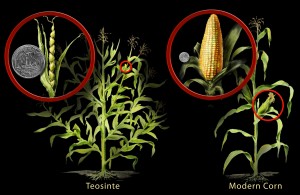What Is the Difference Between Genetically Modified Organisms and Genetically Engineered Organisms?
go.ncsu.edu/readext?371216
en Español / em Português
El inglés es el idioma de control de esta página. En la medida en que haya algún conflicto entre la traducción al inglés y la traducción, el inglés prevalece.
Al hacer clic en el enlace de traducción se activa un servicio de traducción gratuito para convertir la página al español. Al igual que con cualquier traducción por Internet, la conversión no es sensible al contexto y puede que no traduzca el texto en su significado original. NC State Extension no garantiza la exactitud del texto traducido. Por favor, tenga en cuenta que algunas aplicaciones y/o servicios pueden no funcionar como se espera cuando se traducen.
Português
Inglês é o idioma de controle desta página. Na medida que haja algum conflito entre o texto original em Inglês e a tradução, o Inglês prevalece.
Ao clicar no link de tradução, um serviço gratuito de tradução será ativado para converter a página para o Português. Como em qualquer tradução pela internet, a conversão não é sensivel ao contexto e pode não ocorrer a tradução para o significado orginal. O serviço de Extensão da Carolina do Norte (NC State Extension) não garante a exatidão do texto traduzido. Por favor, observe que algumas funções ou serviços podem não funcionar como esperado após a tradução.
English
English is the controlling language of this page. To the extent there is any conflict between the English text and the translation, English controls.
Clicking on the translation link activates a free translation service to convert the page to Spanish. As with any Internet translation, the conversion is not context-sensitive and may not translate the text to its original meaning. NC State Extension does not guarantee the accuracy of the translated text. Please note that some applications and/or services may not function as expected when translated.
Collapse ▲A: Good question. Here is a rather short answer to this question from NAS: FAQs on GE Crops | Genetically Engineered Crops at the National Academy of Sciences
Genetically engineered and genetically modified are often used interchangeably when referring to varieties of crops developed by means other than traditional breeding. Genetic modification refers to a range of methods (such as selection, hybridization, and induced mutation) used to alter the genetic composition of domesticated plants and animals to achieve a desired result. Genetic engineering is one type of genetic modification that involves the intentional introduction of a targeted change in a plant, animal, or microbial gene sequence to achieve a specific result.
Now for a little more detailed answer. Scientists originally never used the term genetically modified organisms or GMOs to describe genetic engineering. This term seems to have come from the popular media. The term has become so common that even scientists often use the term now. For many the term genetically modified organism is synonymous with genetically engineered organism. This article explains how truly difficult it is to define the term GMO.
Most scientists would say that almost all the food we eat has been “genetically modified” by man and that genetic modification includes not only conventional breeding, but simple selections man has made over millennia. Carrots were not orange until the 1700’s and tomatoes used to be the size of marbles. Corn used to have very small ears and kernels with hard seed coats and low digestibility. See picture below from NSF.
Genetically modified food would include almost all the food we eat. Several different ways plant genomes are altered “conventionally” and via genetic engineering are described here. Genetically engineering is the direct manipulation of an organism’s genome using biotechnology. Although many people think this means moving genes from one species to another, that is not always the case. There are several biotechnological methods of manipulating genes. Sometime this is done by actually moving genes within a species or from a closely related species. This resulting organism is referred to as cisgenic. Gene editing is another method of manipulating DNA. There are several techniques available for gene editing including zinc-finger nucleases (ZFNs), transcription activator-like effector nucleases (TALENs), and the clustered regularly interspersed short palindromic repeats (CRISPR)/Cas systems. Gene editing may involve deletion, insertion, silencing or repression. The resulting organism from gene editing is called subgenic.
The type of genetic engineering that the public is most likely familiar with is transgenic. This is where a gene is moved from one non-closely related species to another. Cisgenic changes to DNA would also be possible through conventional breeding, while transgenic changes to DNA are not possible via conventional breeding.
A discussion on the difficulty in defining exactly what a “GMO” is can be found on the Genetic Literacy Project website.
Keith Edmisten, Professor of Crop Science



